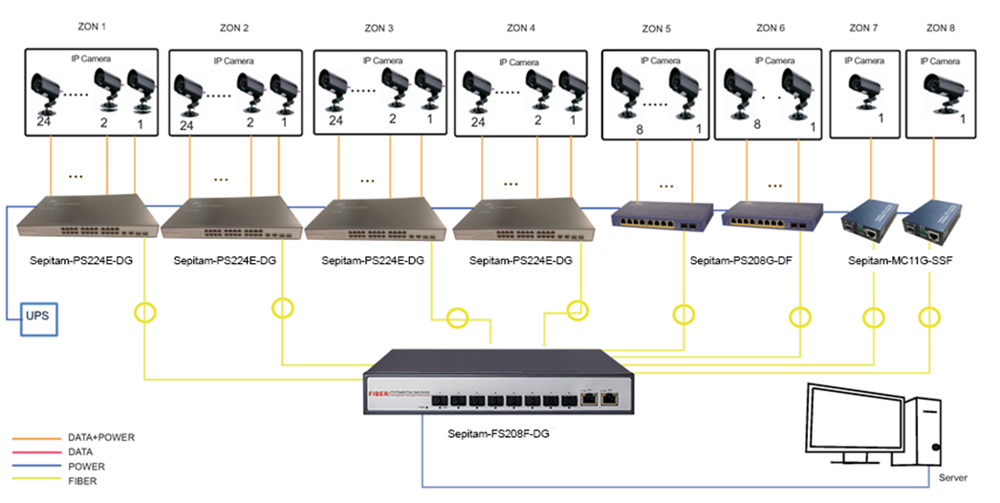- abcd efgh ijkl mnop qrst uvwx yz
An example of a network video surveillance project on an optical fiber platform

The development of IP cameras in large projects is gradually increasing, and specialists and contractors in this field are forced to use products that can meet their needs in the field of optical fiber.
Here is an example of a factory video surveillance system design that is equipped with optical fiber:
In this factory, 8 zones are considered in different parts of the factory. In each zone, the cameras can be at most 100 meters apart. Optical fiber cabling should be implemented in such a way that at least four optical fiber cores are implemented next to each zone. Two cores for switch media converters and two cores as backup.
Security cameras are typically installed in out-of-the-way locations throughout the plant. For cameras that are installed on the ceiling or other inaccessible areas such as beams, along fences, transportation routes, the cost of bringing power to each camera can be easily reduced by using a PoE Media converter. In zones 1 to 4, a 24-port Septam POE switch with two Combo SFP ports is used, and in zones 5 and 6, an 8-port Septam POE switch with SFP output is used. Each switch multiplexes the signal of several cameras connected to it and transmits it over optical fiber. In addition, it also supplies the electricity consumed by the cameras. The optical fiber interface of these switches is SFP module.
For points where there is only one camera, such as zones 7 and 8, instead of using a switch, a single port media converter is used that has an SFP interface to connect to optical fiber so that it can be connected to any type of switcher in the control room.

As you can see in the figure, each of these switches, in addition to supplying the electricity consumed by the cameras, converts the data related to the images of the cameras into optical signals and transmits them on the optical cable.
On the other side of the optical fiber cable, which is generally the control room of the factory, all the data sent from different routes are entered to that point. At this point, there must be a device that can remove the large amount of camera image data, which is in the form of optical signals, from all incoming paths and convert it back into a network or LAN signal.
Here you can use Kerr switch, this switch has 8 SFP optical fiber ports and a LAN uplink port. From the LAN output of this switch, all the received data can be transferred to the server.
What is important and vital in this project is to be able to intelligently choose equipment that will increase the reliability of the system. Maybe there are many ways to do this project, but reducing the number of related devices makes both the price of the whole project reasonable with regard to its quality and efficiency, and the amount of possible system failures is significantly reduced.